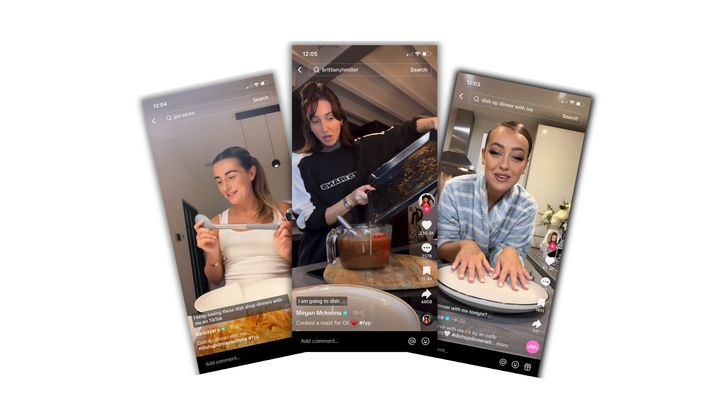
Right, I’m going to share a secret with you and I would prefer it if you didn’t judge me. If I can’t get going with cleaning or cooking at home, I watch other people doing it on TikTok and it gives me the motivation to get moving with my own duties.
Take for example, last Sunday. I really wanted to make a roast dinner. Of course, this takes a long time, a lot of different dishes, and is a whole effort. So, to get myself in the mood, I watched some of my favourite “plate up” creators on TikTok put their meals together on the plate and somehow, between the steam of the hot food, the delicate placement on the plate and the gravy being poured over all of it just put me right in the mood.
It turns out, I’m really not alone. Lots of us can’t get enough of these videos and according to HelloFresh, 270 million of us find ourselves enchanted by these cosy videos.
Why are plate up videos on TikTok so popular?
To truly get to the bottom of the psychology behind “plate up” videos, HelloFresh asked Consultant Counselling Psychologist Dr Ritz for her thoughts on the phenomena.
“There is a huge fascination of watching people cook on social media. It could be from gaining inspiration, building confidence or relaxing through the value of cooking and food. We can understand these trends from various psychological perspectives such as social cognitive theory, belonging and coping,” she explains.
And these are the main theories she outlined behind the trend:
Social Cognitive Theory:
“Social Cognitive Theory suggests that individuals learn by observing others. Viewers may be learning new cooking techniques, recipes, or gaining confidence in cooking by watching others. The social aspect of the trend aligns with theory’s emphasis on social learning through modelling.”
Mirror Neuron System:
“The Mirror Neuron System suggests that individuals have neurons that fire both when performing an action and when observing someone else perform that same action. In the context of cooking videos, viewers might experience a form of neural resonance, feeling a connection to the actions they observe and potentially triggering positive emotions.”
Belonging to a Community:
“Participating in or observing trends can create a sense of community among individuals who share similar interests. It contributes to the development of virtual communities centred around cooking and food, where people can exchange ideas and tips.”
Coping Mechanism:
“Watching cooking or meal preparation videos can serve as a form of relaxation and distraction. The repetitive and methodical nature of the process can be soothing, providing some respite from stress or daily challenges.”
Who knew it was more than just mindless viewing?